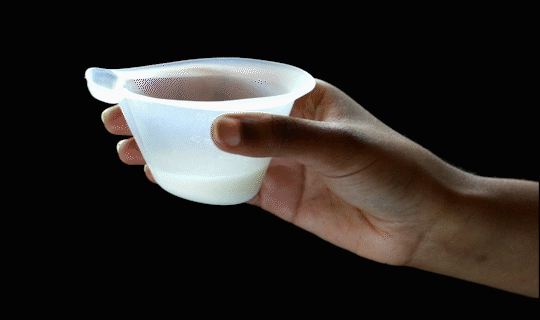Guest contributor Mark Murray is vice president for Global Engagement and Communications at PATH.
Every day, I feel fortunate to work at PATH, collaborating with amazing people all around the world to advance innovations that save lives and dramatically increase the health and opportunities of individuals, families, and communities.
But there is one category of innovation that has an extra-special place in my heart, and that is PATH’s work to help prematurely born infants survive and thrive.
That’s because my son Rees was born 9 weeks prematurely, and spent many weeks in the hospital before he was large enough and healthy enough to come home.
Thanks to the medical care that he received, Rees overcame the risks and complications of his premature arrival. He is now a happy and healthy seven-year-old boy who loves climbing, swimming, reading, Legos, and anything remotely connected to Star Wars.
But around the world, especially in low-resource settings, hundreds of thousands of premature babies don’t have access to the advanced medical care that saved Rees’s life and gave him such a great start.
That’s why I’m so proud of the work PATH is doing to help bring desperately needed health innovations and services to premature infants all around the world. PATH innovations can mean the difference between life and death, and between a healthy childhood and lifelong challenges.
Here are some of the innovations we’re developing to ensure all babies have a chance at their full potential.

Compared to other lifesaving medical equipment, neonatal resuscitation devices are relatively simple: a mask that covers a baby’s nose and mouth is attached to a bag that pumps air when squeezed. Photo: PATH/Jillian Zemanek.
1. Neonatal resuscitator
PATH identifies and assesses equipment, such as manually operated neonatal resuscitation devices,* that can help health workers save lives. When we find promising devices, we test them rigorously and identify ways to make them better suited for use in resource-limited settings. We also build capacity around procurement and processing of these reuseable devices with health workers at the country level to increase access and correct use.

Chlorhexidine gel or liquid is a simple, inexpensive, and effective lifesaving medicine that could save more than 300,000 newborns in their first days of life. Photo: PATH/Patrick McKern.
2. Chlorhexidine
About one-third of newborn deaths in developing countries are related to severe infection. By applying chlorhexidine* on a newborn’s umbilical cord, we can dramatically reduce that risk. This is a simple, inexpensive, and effective lifesaver that can be used by health care workers or at home by family members. The potential impact? Annually, more than 300,000 newborns could be saved in their first days of life.
PATH leads an international group of organizations committed to advancing the use of 7.1 percent chlorhexidine digluconate for umbilical cord care through advocacy and technical assistance. We’re also working jointly with manufacturers in African and Asian countries to increase availability of the product made by local producers.

For newborns who don’t have access to breastmilk, human milk banks provide safe and nutrient-rich mother’s milk. Photo: PATH/Tom Furtwangler.
3. Human milk banking
Human milk is the best first food for newborns. Human milk banks, which rely on donated mothers’ milk, play an important part in ensuring that safe, pasteurized human milk is available to babies without access to their own mother’s milk. These banks are especially crucial for babies who are premature, low birthweight, or orphaned. And yet, the high cost of commercial-grade milk pasteurizers is one reason why it’s been difficult to bring this lifesaving intervention to poor countries—the very places where vulnerable infants are at the highest risk.
PATH is a global leader on this issue, collaborating with milk banking organizations and experts around the world, strengthening health services in specific countries like South Africa and India, and designing and advancing cost-saving technologies.

The NIFTY cup, designed to allow infants to drink breastmilk at their own individual pace. Video: PATH/Patrick McKern.
4. NIFTY cup
Ideally all newborns should be fed breastmilk, but millions of babies are born each year who can’t breastfeed or drink through a bottle due to prematurity or craniofacial anomalies like cleft lip or palate. The inability to feed properly puts them at risk of starvation. The NIFTY cup** was designed to allow infants to drink at their own individual pace. The flow of milk is much easier to control through a unique reservoir and flow channels. This also prevents waste by letting infants lap the milk.
PATH’s multidisciplinary team of product development, public health, and commercialization experts partnered with epidemiological, dental, and medical experts at Seattle Children’s and the University of Washington to create the NIFTY™ cup. This solution, although still in the research and development stages, has the potential to save millions of lives.
*Neonatal resuscitator and chlorhexidine:
Support for these projects is made possible by the generous support of the American people through the United States Agency for International Development (USAID) under the terms of the HealthTech V Cooperative Agreement #AID-OAA-A-11-00051. The contents are the responsibility of PATH and do not necessarily reflect the views of USAID or the US Government.
**NIFTY cup:
PATH was nominated for a $250,000 validation award from the Saving Lives at Birth: A Grand Challenge for Development– a partnership of the United States Agency for International Development (USAID), the Government of Norway, the Bill & Melinda Gates Foundation, Grand Challenges Canada, the U.K.’s Department for International Development (DFID), and the Korea International Cooperation Agency (KOICA), which will fund the next phase of research and development.
